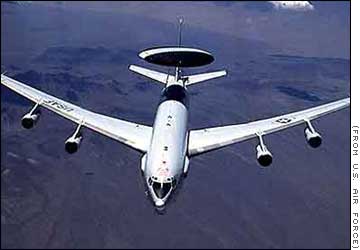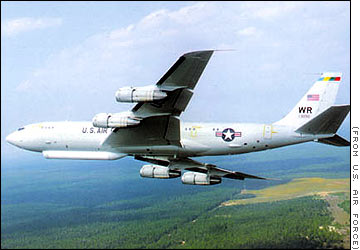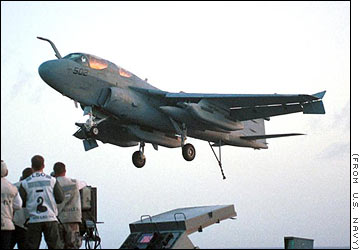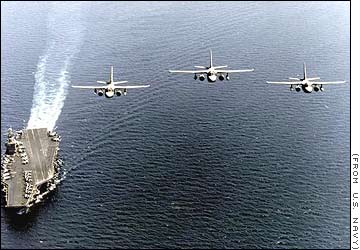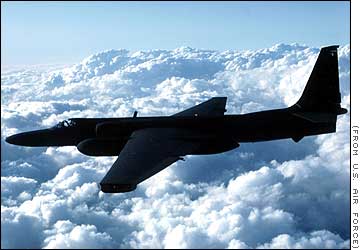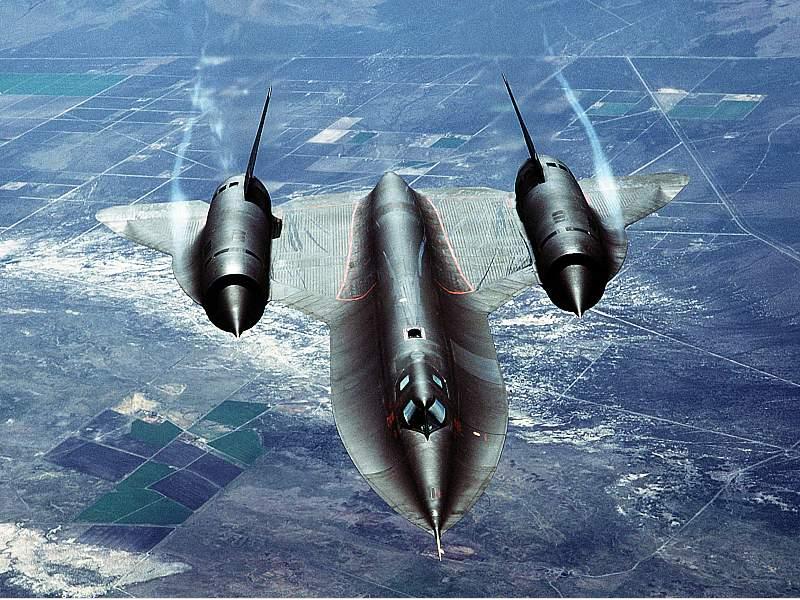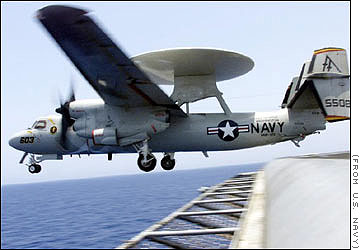
If the U.S. Navy can see its enemies, it can kill them. The Hawkeye helps carriers do just that. It's an airborne surveillance craft with a powerful radar that detects ships and aircraft hundreds of miles away. The $51 million plane flies at 345 mph.
E-2 Hawkeye
Primary
function: Airborne early warning, command and control
Speed: 345 mph
Armament: None
Crew: Five
Propulsion: Two Allison T-56-A427
turboprop engines; (5,000 shaft horsepower each)
Length: 57 feet 6 inches (17.5 meters)
Height: 18 feet 3 inches (5.6 meters)
Wingspan: 80 feet 7 inches (28 meters)
Weight: Max. gross, take-off: 53,000 lbs (23,850 kg) 40,200 lbs basic (18,090 kg)
Ceiling: 30,000 feet (9,100 meters) Crew: Five
Armament: None
Contractor: Grumann Aerospace Corp.
Unit Cost: $51 million
Operational: January 1964
